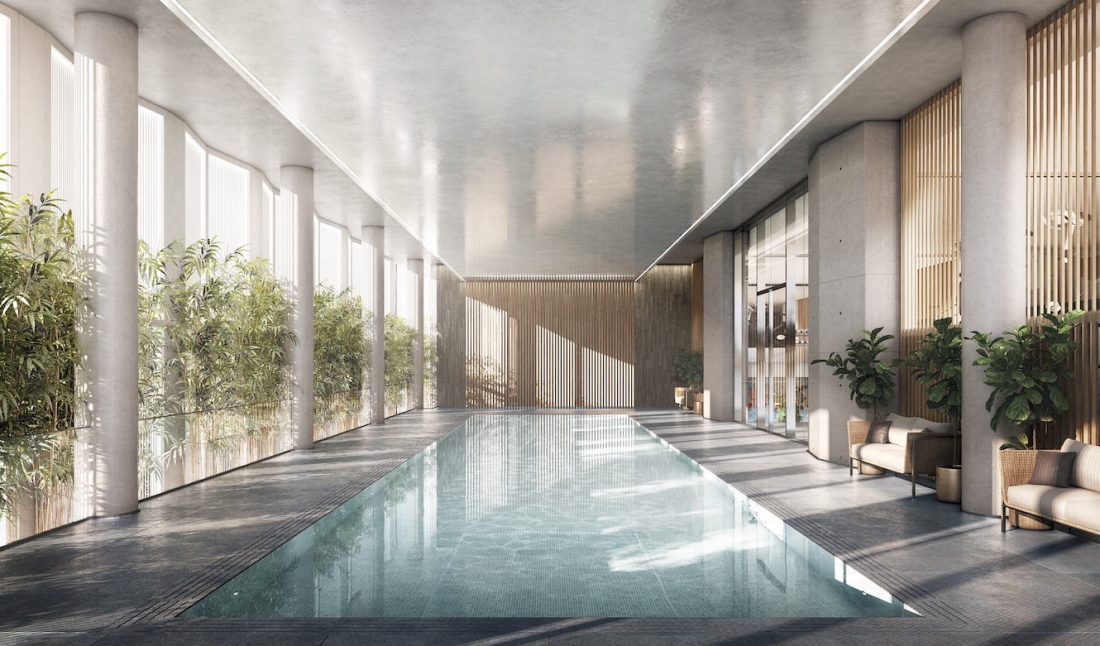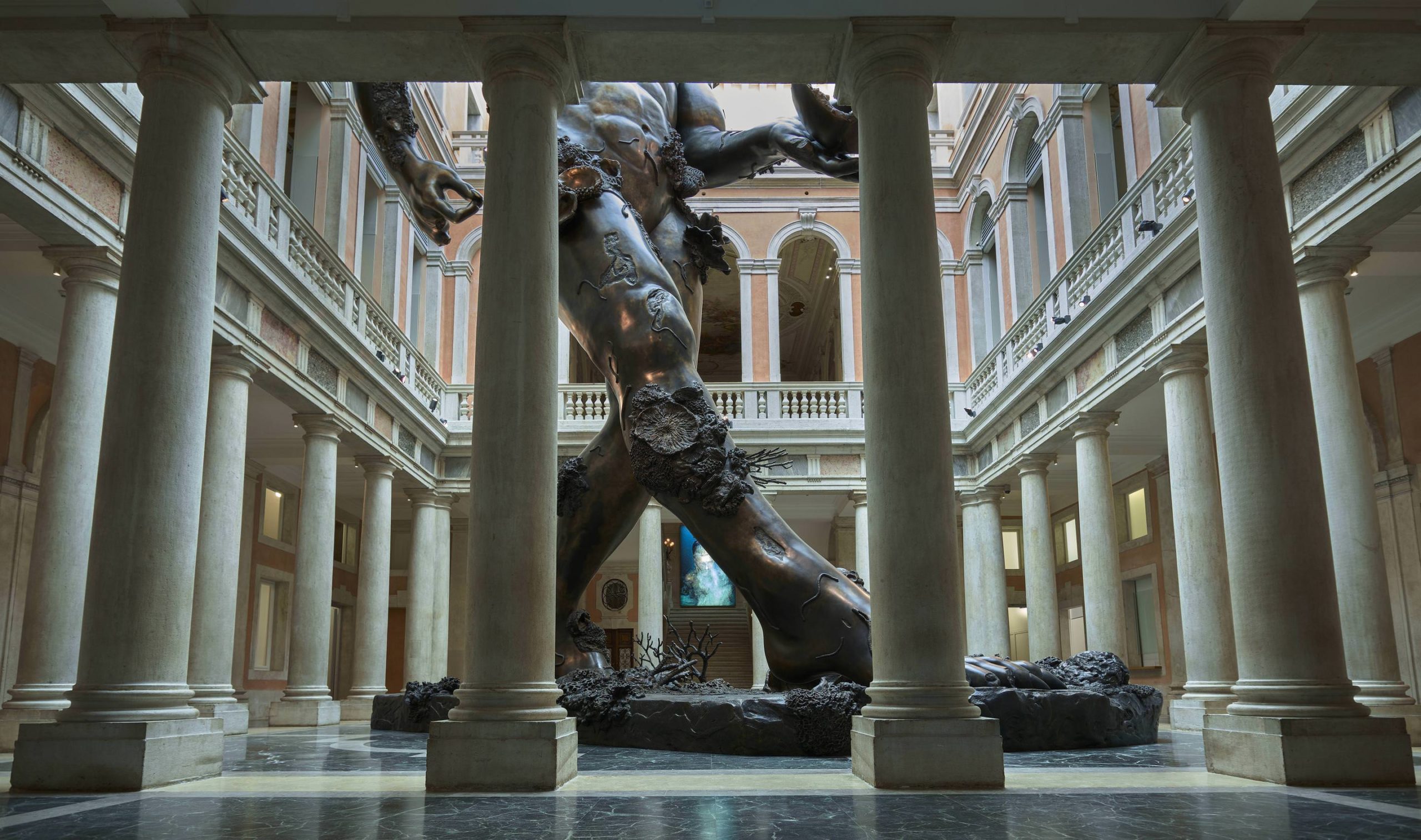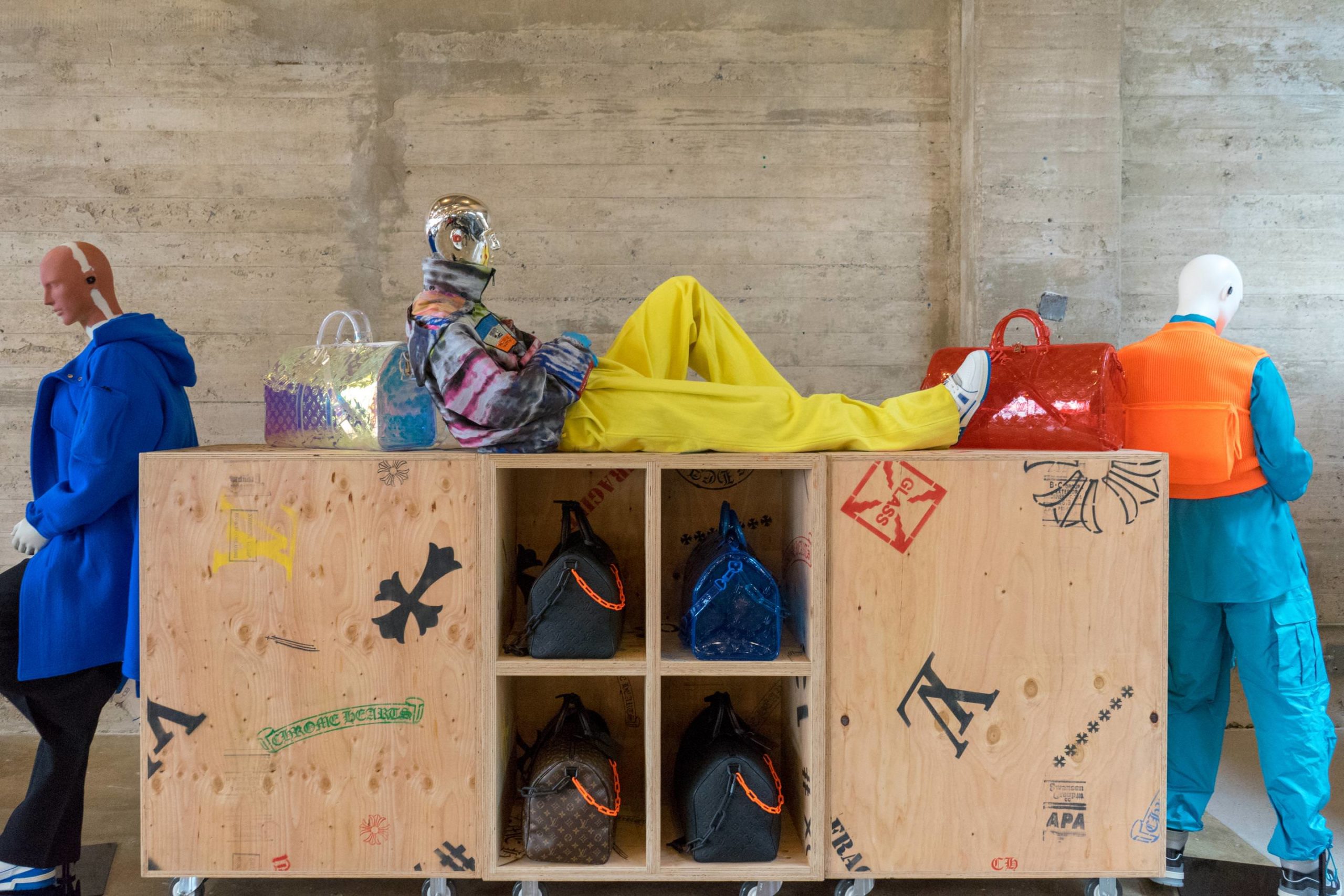Aby Rosen is a force in New York and international real estate. His projects are fueled by a passion for preserving Modernist architecture (the Seagram building, the Gramercy Park Hotel, etc.) and infusing contemporary art into luxury living. An avid art collector, he’s been behind a number of projects that put art at the forefront, including Lever House and W South Beach. Last year he even made waves in New York nightlife, with the opening of the Paramount Hotel and the reboot of the Diamond Horseshoe theater and club below.
A recent Rosen development through his firm RFR Holding, 100 East 53rd, a new residential tower designed by Foster + Partners, is a far cry from the sky-scraping walls of glass that are dominating the changing Manhattan skyline. We spoke with Rosen about working with the architect Norman Foster and the evolving personality of Midtown.
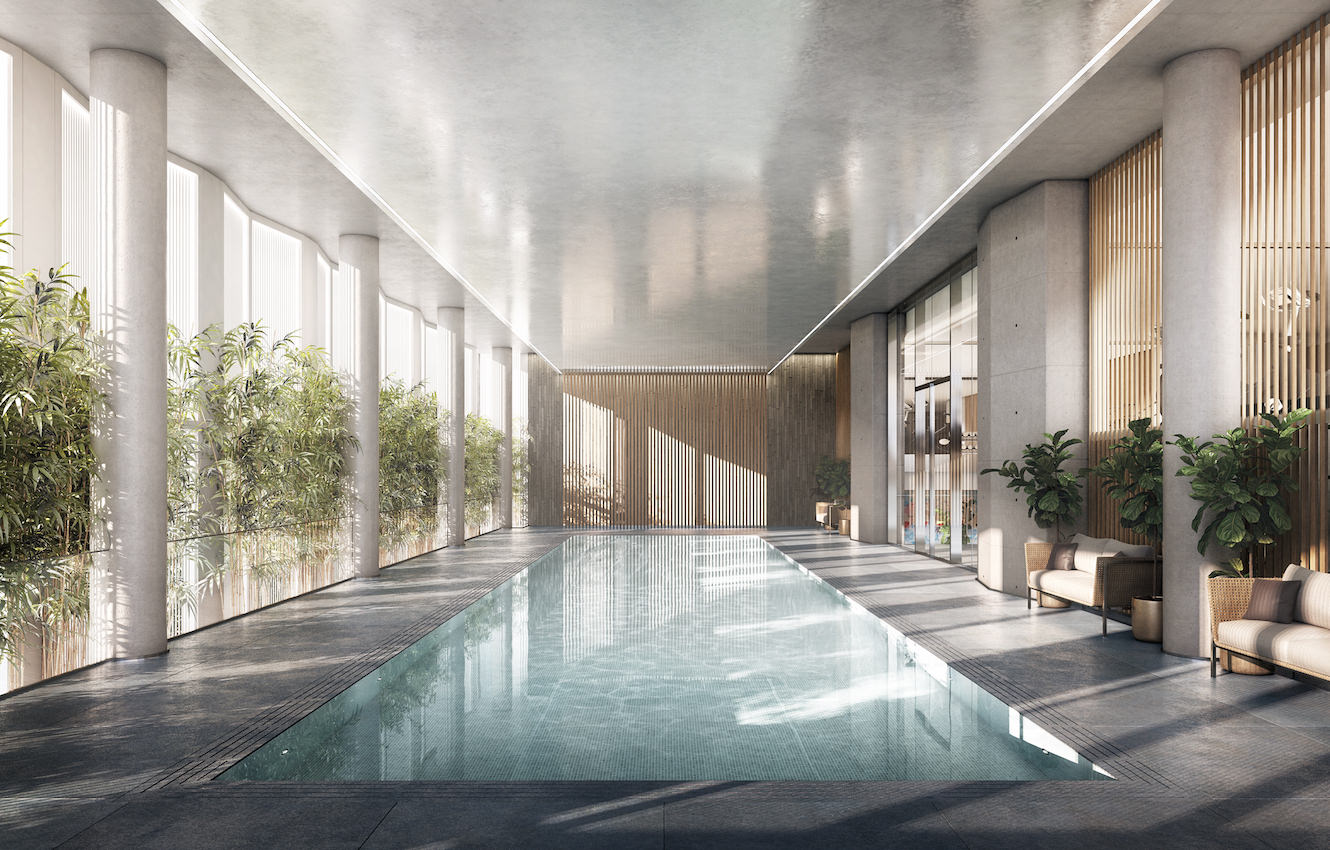 Rendering of 100 East 53 by DBOX
Rendering of 100 East 53 by DBOX
WHITEWALL: You bought the site for 100 East 53rd several years ago. What appealed to you about the site?
ABY ROSEN: Almost eight or nine years ago I wanted to put a condo there in the hotel. We worked on it, had the St. Regis Hotel sign up, then the market came down and tanked, so we stopped doing that project. Then the market came back about two years ago for high-end condos. So now we are doing whole condo property instead of the hotel, because we knew the market was strong enough that it could handle this kind of project. It is next to the Seagram, being on 53rd Street, a great architecture block.
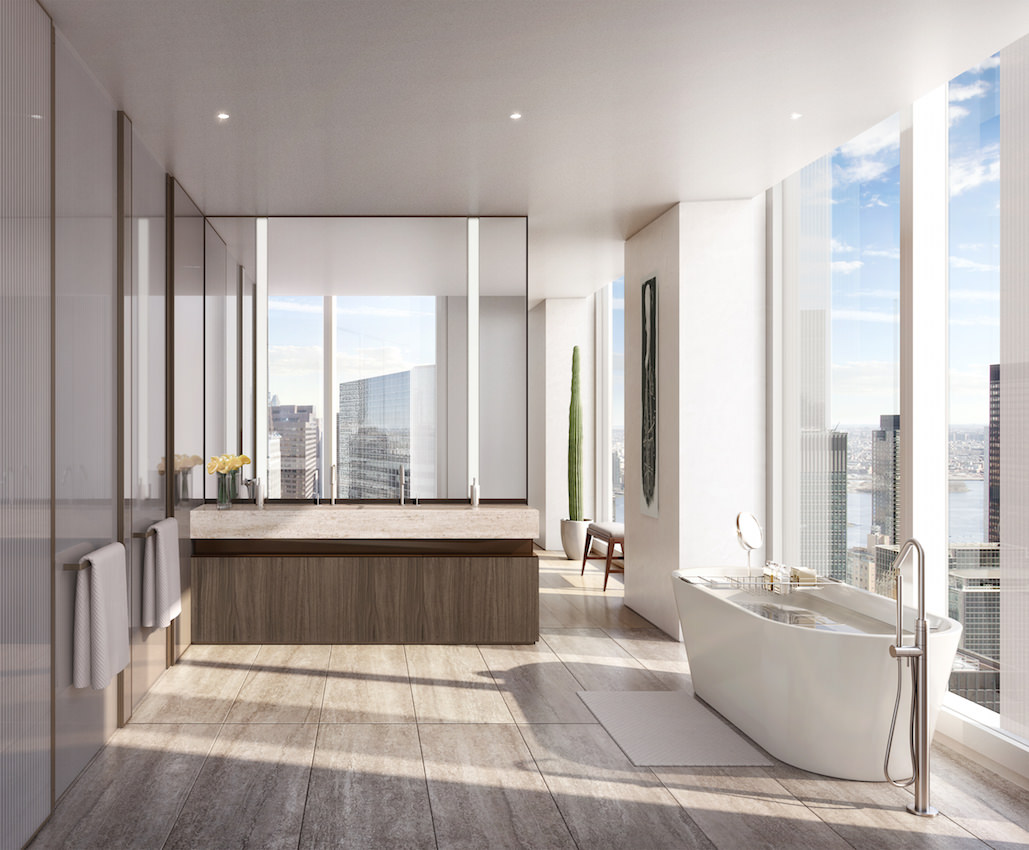 Rendering of 100 East 53 by DBOX
Rendering of 100 East 53 by DBOX
WW: You’re working with Foster + Partners on it. Can you tell us about the design?
AR: We are doing a wonderful Foster + Partners product. Basically, we tweaked the design from the original a couple of years ago. The second floor will have a restaurant and some kind of food component on the entry level. Then we’re having a spa, gym, all those amenity packages on three and four. From the fifth floor to the ninth floor we are going to have very cool, very edgy, downtown-feel lofts that Norman Foster designed for us. We are going to have concrete floors, concrete walls, and a kind of underground feel for huge one- and two-bedroom apartments. It is for people who want pieds-à-terre or to live in Midtown, but still want that downtown feel. Then from the tenth floor up are apartments all the way up to the sixty-fifth floor.
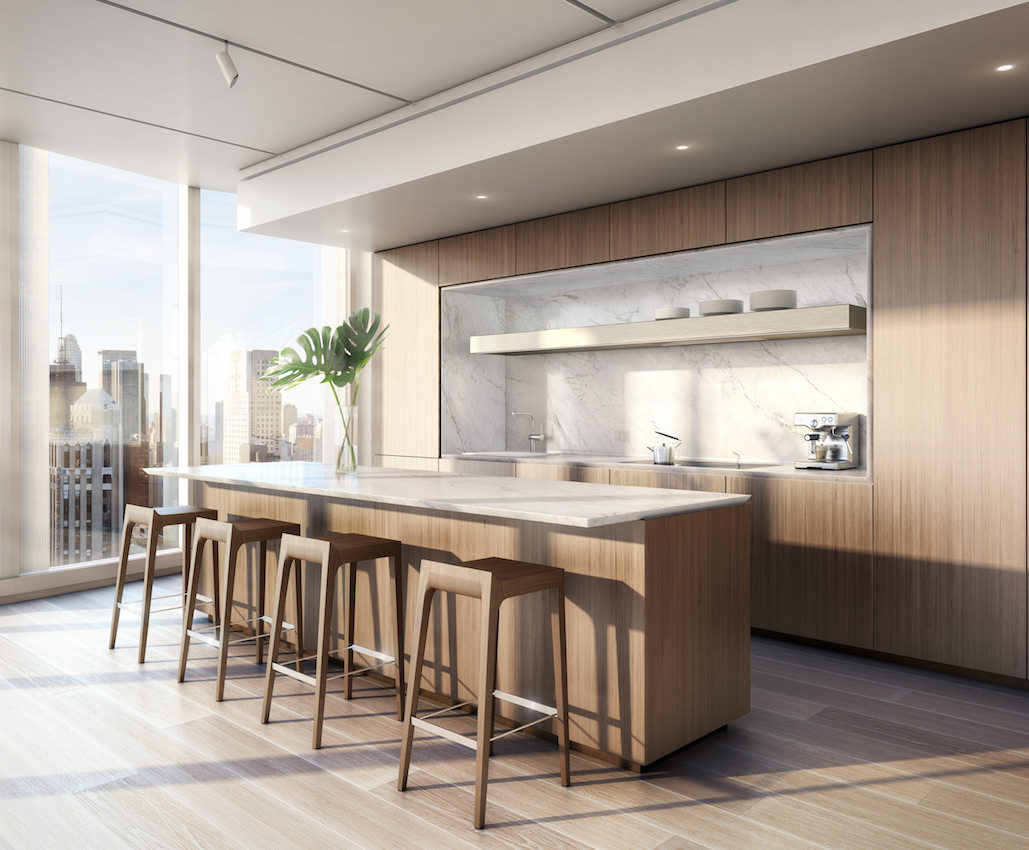 DBOX for RFR
DBOX for RFR
WW: It seems to be designed to coincide with a change taking place in Midtown, where we’re seeing more residential projects in a neighborhood that’s been historically a business district.
AR: You know, Midtown Manhattan has become a really attractive place for people to work and to live. Before, there were only offices and some hotels. Now, there is a combination of residency, retail, hotels, and short- and long-term rentals. Every part of New York has become like that. A neighborhood that used to be geared to one industry now has multiple useable environments.
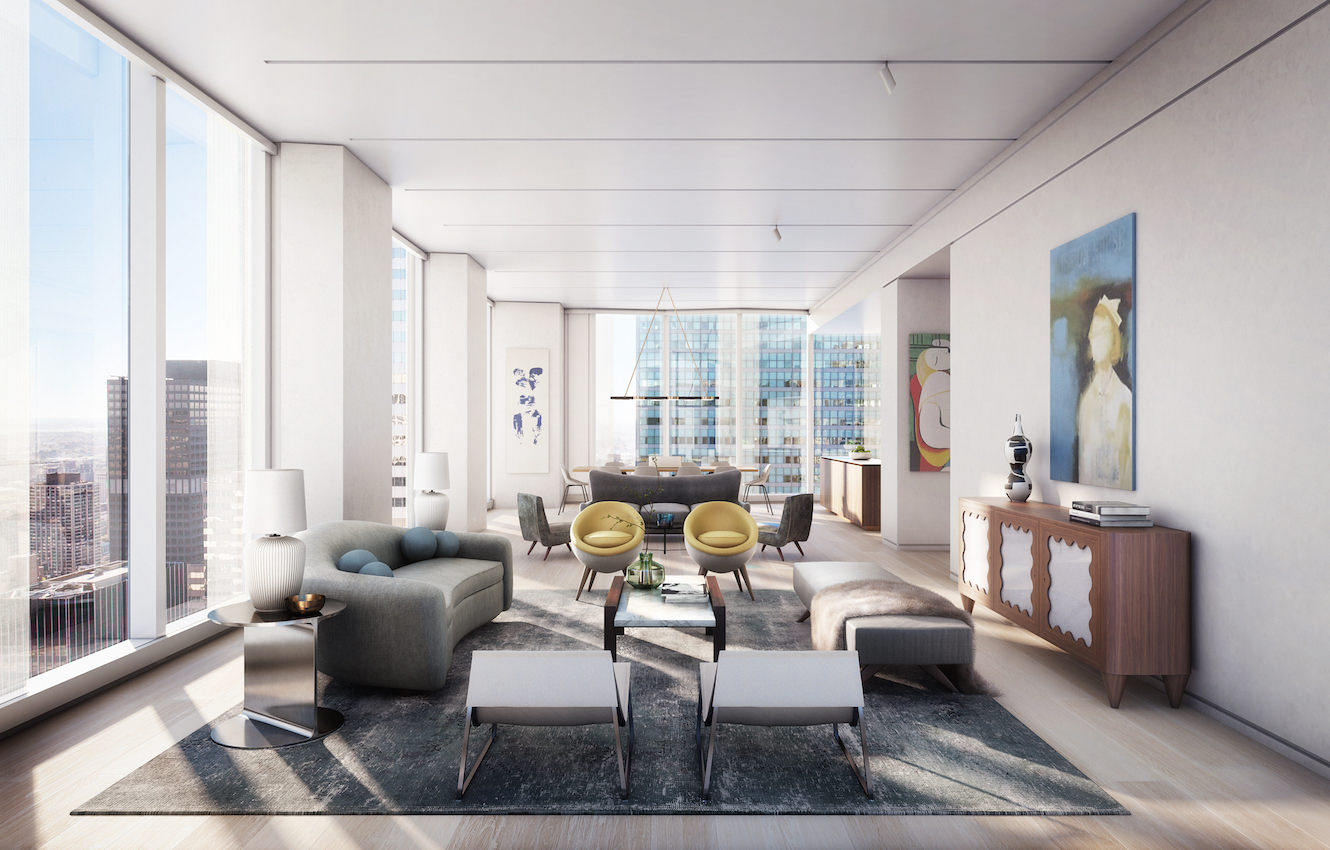 DBOX for RFR
DBOX for RFR
On Fifty-Third Street you have the MoMA, the Seagram; we have the Lever House, which we own. In our properties we get more into design—they are a really artistic expression. 53rd Street has become a “wow” street. Norman really understands New York, what it means to be next to the Seagram Building. You have to kind of be a strong architect and character to allow yourself to go next to a famous building. Not everybody has the stamina for it. It is all about the timeless design—you do not want to be too contemporary or be too boring.
WW: We saw a rendering of the facade, which sort of has this undulating, pleated or folded design.
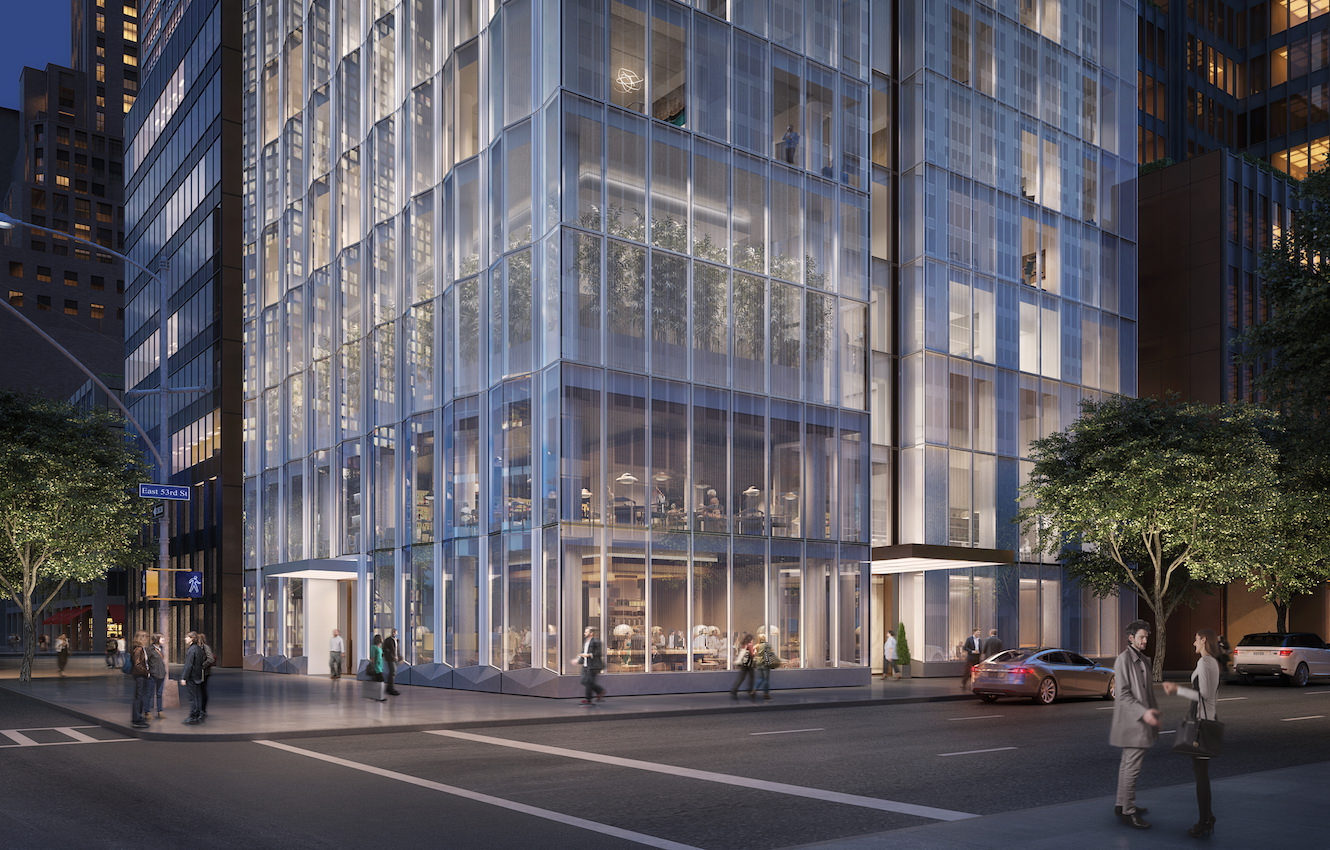 Rendering of 100 East 53 by DBOX
Rendering of 100 East 53 by DBOX
AR: Correct. It is going to be a really dramatic and interesting facade instead of being just straight glass facade from top to bottom. We wanted to make it a little bit more playful and a little bit more dynamic.
WW: Right, if we see one more glass tower . . .
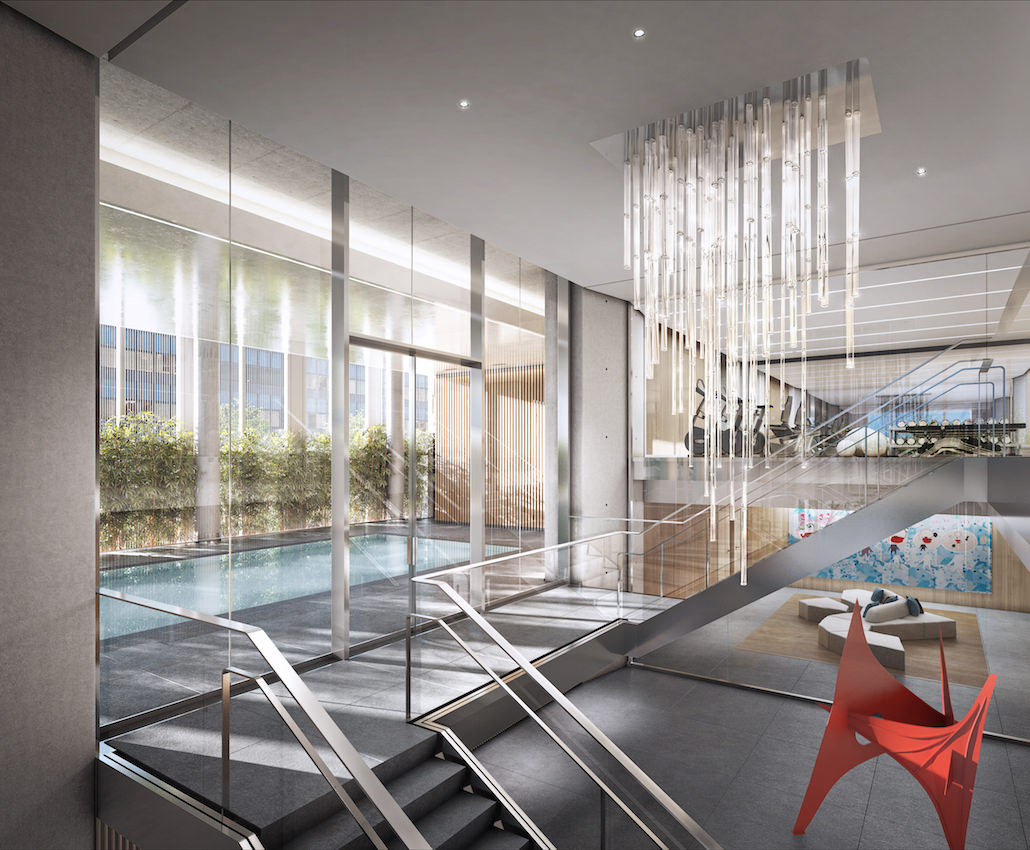 DBOX for RFR
DBOX for RFR
AR: Yeah, it is a bit overdone. If you are doing a high rise, you have to be playful a little bit. It needs to have some sort of character, some sort of expression.
WW: A lot of your projects have some inclusion of contemporary art. Will 100 East 53rd?
AR: We are going to commission two artists to do something for us in the lobby. As we always do, one of them is going to be a local New York artist, and one may be Rachel Feinstein. We have worked with her before in places like the Lever House.
WW: Will there be a rotating exhibition or site-specific program like you’ve done before at Lever House?
AR: Maybe, maybe not. It may work. You know, with other condominiums it can be very overwhelming to overplay that. Having Foster’s monolithic design, and interior design by William T. Georgis with a warm feel to it, I think that is enough. If you add too much, it is going to take away from the architecture. Sometimes you have to let the architecture breathe and not overpower it with art. When we did this ten years ago, we were very unique with it and today everybody jumped on that bandwagon, which is okay, because that is one of the reasons it was the reason we did it. But now everyone is doing, like, five prints and ten photographs. It looks too overbearing. If it’s good architecture, you don’t have to go completely crazy.
WW: The last time we spoke, you talked about New York losing its edge, and with the Diamond Horseshoe you hoped to bring it back. Do you think that worked?
AR: Yes, I believe we did that. The Diamond Horseshoe is on fire now. It has been getting all these awards and has been getting a little bit more popular, all through word of mouth. It has become a must-see when you come to New York. You know, Lady Gaga did her after-party there after the Met Ball. People love interactive shows, and people love a little sexuality. And the space itself is very beautiful with great scenery.
WW: Would you see yourself doing something like that in any other city?
AR: As much as I like that drama and theater production, that isn’t really what I do. I like being part of the development. It would be a kind of an interesting spin, but I have enough creativity when it comes to real estate, art, and architecture, I don’t need to be a theater producer.
This article is published in Whitewall‘s fall 2015 Fashion Issue, out now.






